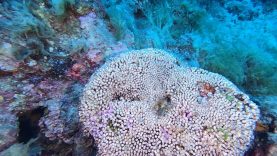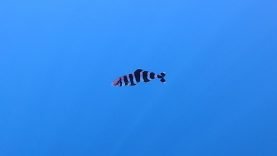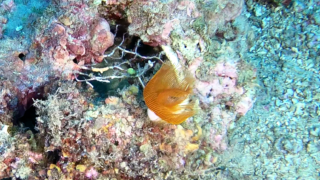Cetacean sanctuary: meeting with Dolphins and Humpback whales

As usual every year we tell of the meeting with the Dolphins, this one took place on 02/08/2020 and a Whale almost certainly a Humpback Whale Megaptera novaeangliae in the day before 01/08/2020 always together with many dolphins. Santuario dei cetacei incontro con i Delfini e Megattera intotheblue.it

It often happens in the summer to see dolphins jumping in packs or in a few isolated individuals during a boat trip in what is considered the cetacean sanctuary. It is rare, however, that these endemic bottlenose dolphins from the Mediterranean Sea approach curiously until they play under the boat.

Even more rare is instead to meet a whale, especially a Humpback whale, Megaptera novaeangliae, although in recent years there have been several sightings. In our case there were two whales, and after having accidentally seen and photographed the classic jump out of the water of the humpback whale, we managed to film it before it sank completely disappearing in the blue.

Humpback whales can be found in all oceans, and are typically coastal whales, which often get very close to the coast to go into small bays and estuaries. The Mediterranean is completely different, where several sightings of this beautiful cetacean have been recorded in recent years.
https://www.newnotizie.it/2019/06/21/enorme-balena-compare-mar-tirreno
The Cetacean Sanctuary or Cetacean Triangle is a protected marine area included in the French, Monegasque and Italian territory, classified as a Specially Protected Area of Mediterranean Interest. In Italy, the Sanctuary for marine mammals was established in 1991 as a protected marine natural area of international interest, and occupies a surface area of 2,557,258 ha (about 25,573 km2) in the regions of Liguria, Sardinia and Tuscany.

The marine protected area extends in the Corsican-Ligurian-Provencal basin from Punta Escampobariou (near the French city of Toulon) to Capo Falcone and Capo Ferro (Sardinia), up to Chiarone (border between Tuscany and Lazio) and occupies a marine surface total of approximately 87,500 km2. Santuario dei cetacei incontro con i Delfini e Megattera intotheblue.it
https://it.wikipedia.org/wiki/Santuario_per_i_mammiferi_marini

Even this summer the meeting was random and not specifically wanted, it took place about 5 miles off the coast of Livorno, in the early morning when boats and ferries are not too annoying. The herd of about fifteen specimens probably females and puppies, was swimming from the open sea coming from the direction of Gorgona and heading towards the coast at the height of Livorno / Castiglioncello. As can be seen from the video, despite the engine running and the boat sailing at minimum speed, they let themselves be approached several times and rather easily let themselves be filmed for about an hour right under the boat.

The bottlenose dolphin (Tursiops truncatus, Montagu, 1821) is a cetacean odontoceto belonging to the Delphinidae family. It is one of the rare species of dolphins that endure captivity; also because of this it is the most studied and the most common in dolphinaria. It is widespread in all the seas of the world, with the exception of the Arctic and Antarctic areas and there are two distinct populations, one coastal and one open sea.
It uses to hunt the technique of echolocation and feeds mainly on fish. She reaches sexual maturity around the age of 12 and females give birth to only one baby. It generally lives in flocks formed by females and offspring, while males can form associations called “alliances”. Due to the influence of the media (the famous dolphin from the Flipper TV series was a bottlenose dolphin), he became the quintessential dolphin.
https://it.wikipedia.org/wiki/Tursiops_truncatus






















